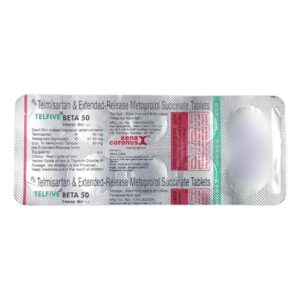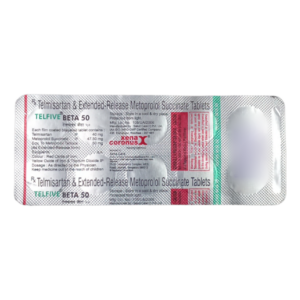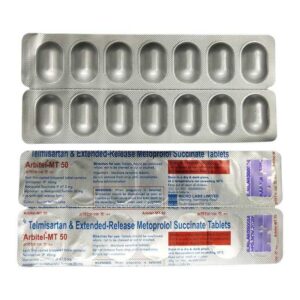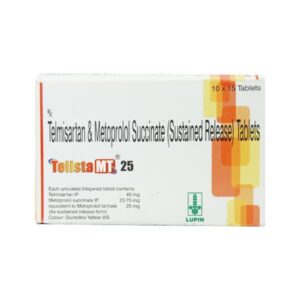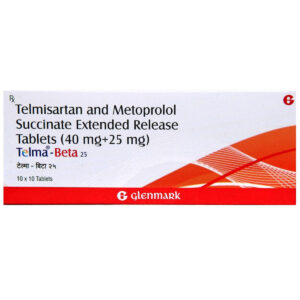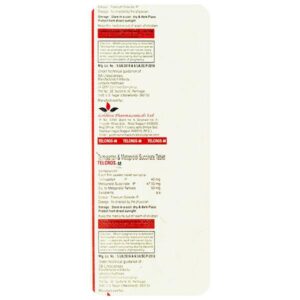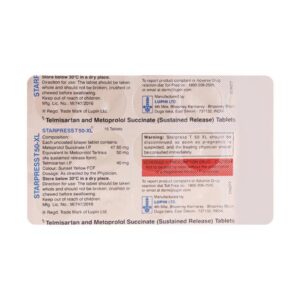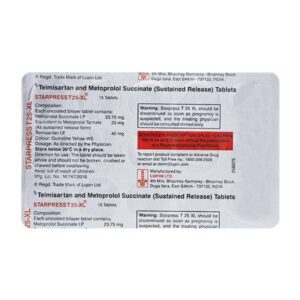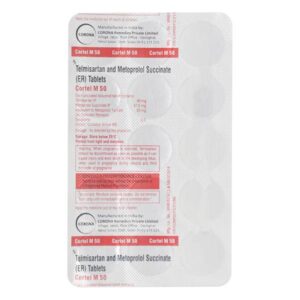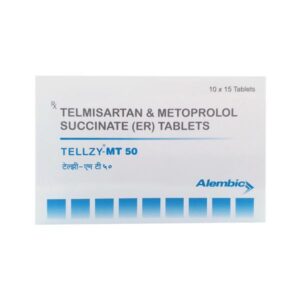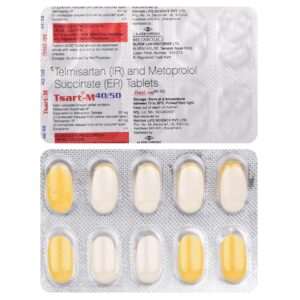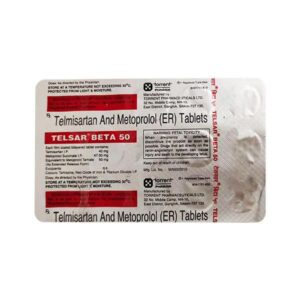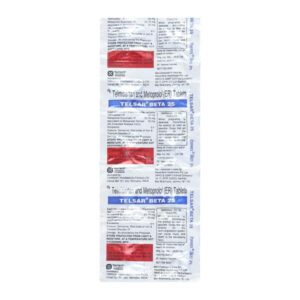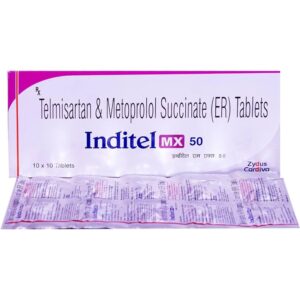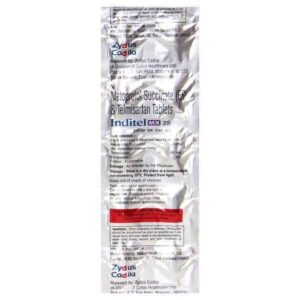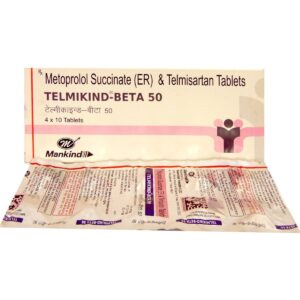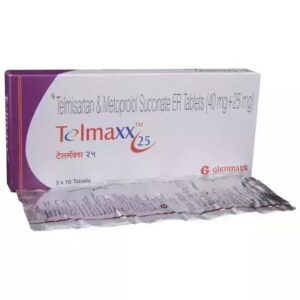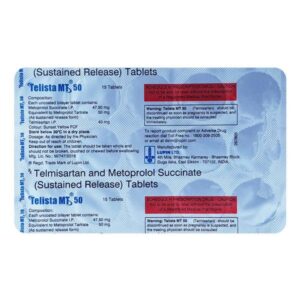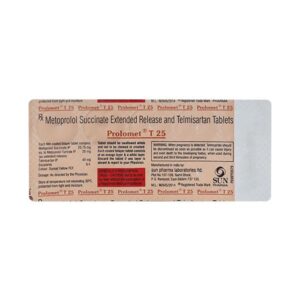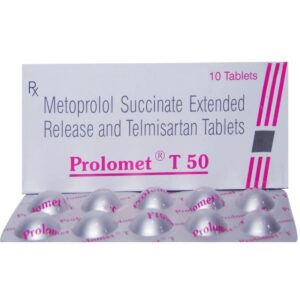METOPROLOL + TELMISARTAN
Metoprolol: Metoprolol is a prescription medication belonging to the class of drugs known as beta blockers. It is commonly used to treat various cardiovascular conditions, including high blood pressure (hypertension), angina (chest pain), heart failure, and to prevent heart attacks.
The mechanism of action of Metoprolol involves blocking the effects of epinephrine (adrenaline) on beta receptors in the heart. This results in a decrease in heart rate, cardiac output, and blood pressure, ultimately reducing the workload on the heart and improving overall heart function.
The dose of Metoprolol varies based on the individual’s condition and the severity of symptoms. It is typically started at a low dose and gradually increased under medical supervision. The medication is available in different formulations, including immediate release tablets, extended-release tablets, and extended-release capsules.
Common side effects of Metoprolol can include fatigue, dizziness, lightheadedness, nausea, and cold hands and feet. Other less common and more severe side effects may include slow heart rate, low blood pressure, shortness of breath, depression, and unusual bleeding/bruising. It is important to promptly report any severe or persistent side effects to a healthcare professional.
As with any medication, it is essential to follow the prescribed dosage and directions provided by a healthcare professional. Do not stop or adjust Metoprolol without consulting a doctor, as suddenly discontinuing the medication can lead to a rebound effect and worsen symptoms.
Telmisartan: Telmisartan is a medication belonging to the class of drugs known as angiotensin II receptor blockers (ARBs). It is primarily used to treat high blood pressure (hypertension) and reduce the risk of cardiovascular events such as heart attack and stroke.
The mechanism of action of Telmisartan involves blocking the action of angiotensin II, a hormone that causes blood vessels to narrow, resulting in increased blood pressure. By blocking the receptors to which angiotensin II binds, Telmisartan helps to relax and widen the blood vessels, allowing for better blood flow and reducing blood pressure.
The usual starting dose of Telmisartan for hypertension is 40 mg taken orally once a day. The dose can be adjusted based on the individual’s response, but the maximum recommended dose is 80 mg per day. Telmisartan can be taken with or without food.
As with any medication, Telmisartan may cause side effects. Common side effects include dizziness, headache, nausea, diarrhea, and back pain. Less common but more severe side effects may include allergic reactions, rapid or irregular heartbeat, chest pain, and signs of kidney problems such as increased thirst and urination.
It is important to consult with a healthcare professional before starting or adjusting the dose of Telmisartan, as they can provide individualized guidance based on the specific medical condition and needs of the patient.

